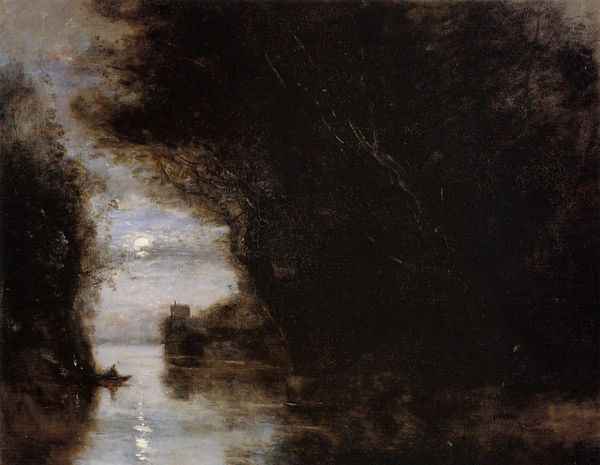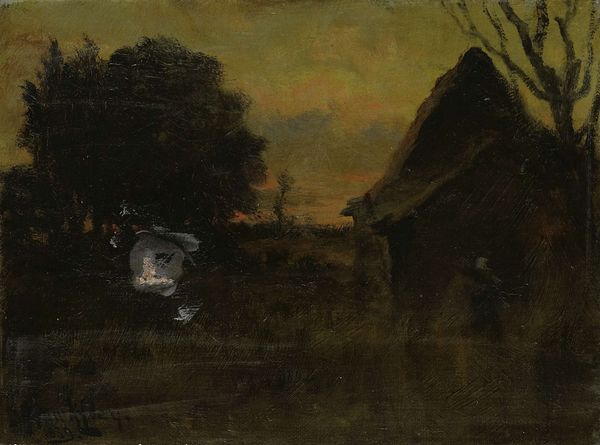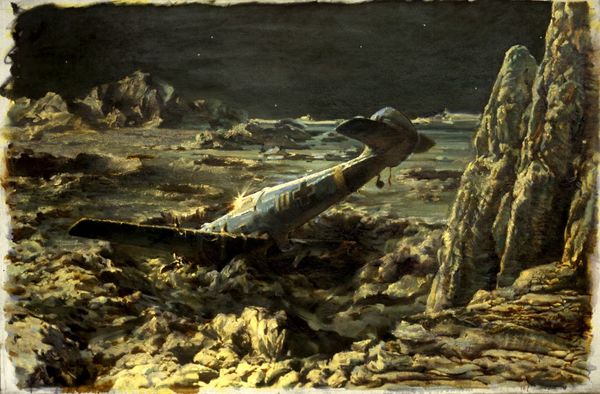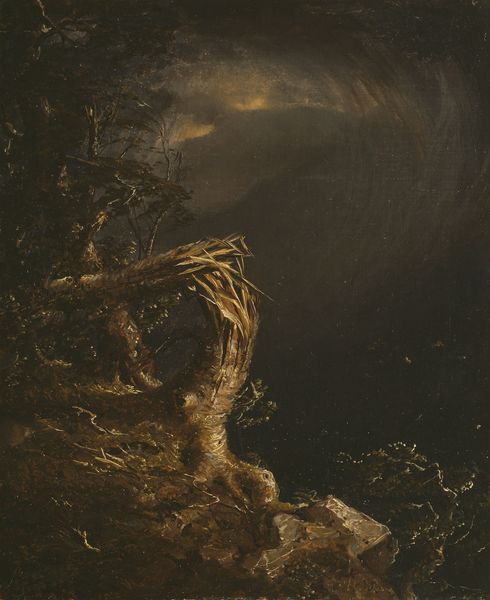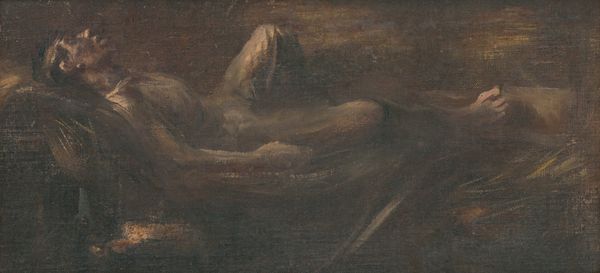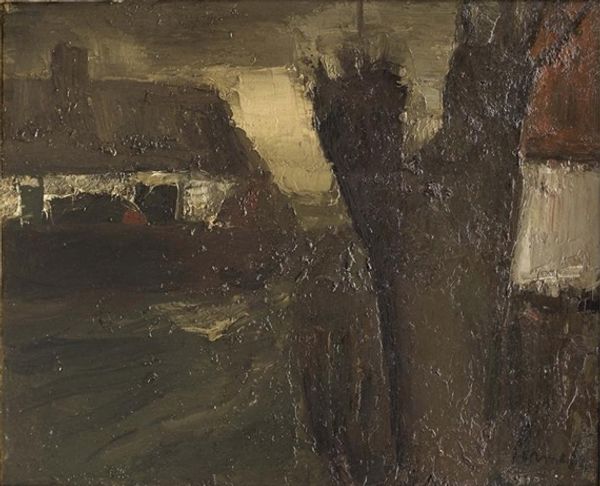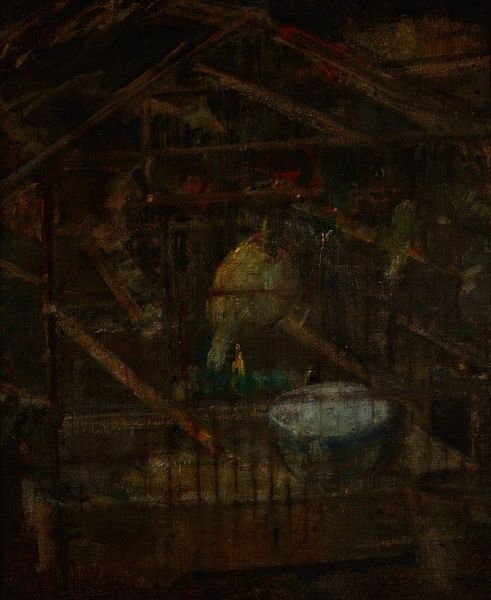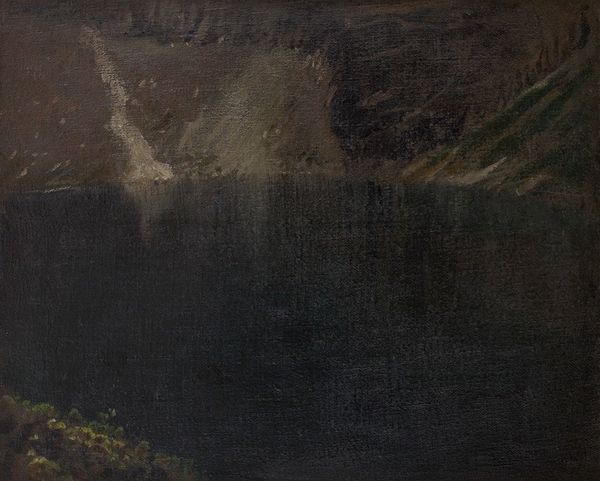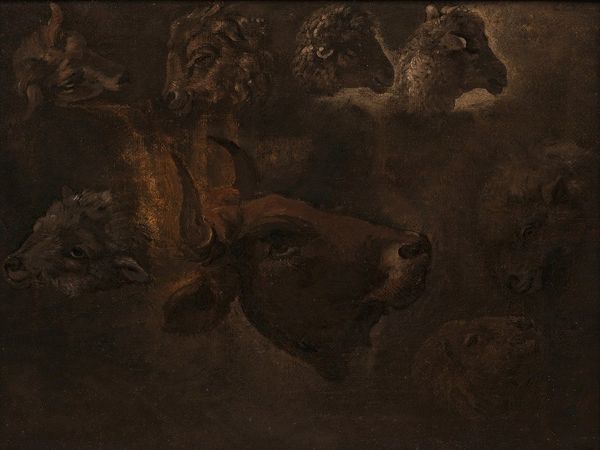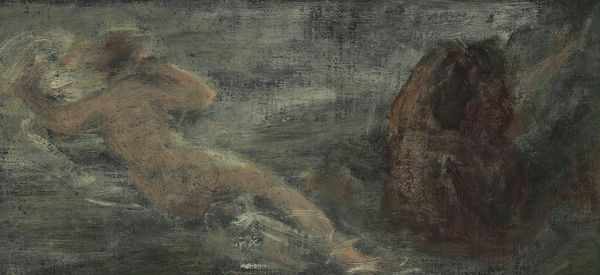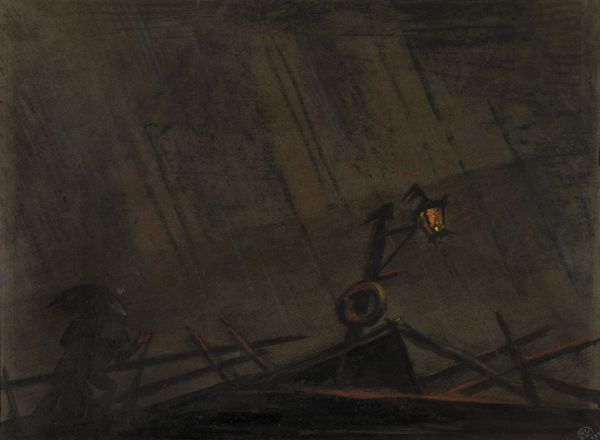
Copyright: Public Domain: Artvee
Curator: James Tissot's oil painting, "Renée and Reverchon Swimming in the Seine," dates from about 1881-1882. It's quite a moody piece, wouldn’t you say? Editor: Intensely so! My initial thought is the oppressive darkness and the unsettling sense of intrusion as if we've stumbled upon a secret ritual or something far more clandestine. The murky palette definitely contributes to this strange ambiance. Curator: Yes, the somber tones really dominate. Looking closer, one considers how Tissot constructs the painting; his approach with materials evokes questions about depictions of leisure and labor at the time. Bathing in the Seine surely carried different meanings for various social classes. Editor: Absolutely. I wonder about the tactile experience of the artist. Were they battling with the consistency of the paint? Or were they gliding, surrendering themselves to the viscous substance to convey movement, unease? Curator: Examining the figures, we note the contrast between their pale skin and the darker water and boat looming above. The very material properties of the paint likely served to highlight the stark reality of swimming in what was then, arguably, a highly polluted river. Editor: True! You can almost feel the grit of the Seine against your skin, see the ghostly figures through smogged lenses. I find that discomfort rather compelling. Like peering into something hidden. Curator: The heavy impasto around the figures is also worth pointing out. How the physical application underscores their presence but equally suggests the overwhelming dominance of the water itself and, more broadly, the city's industrial impact. The labor of living in a rapidly changing urban environment. Editor: I see a reflection of that. Ultimately, I interpret these gestures as whispers of urban romanticism. Not beautiful and nostalgic; visceral, ambiguous and brooding in nature. It's both beautiful and terrifying. Curator: I think that encapsulates it perfectly. The work reminds us how an image can speak not just of beauty, but of a world defined by tangible industrial realities and social divides. Editor: And that sometimes the most affecting art isn't necessarily about offering answers, but asking questions – thrusting us into an eerie tableau and leaving us to swim amidst its undercurrents.
Comments
No comments
Be the first to comment and join the conversation on the ultimate creative platform.


